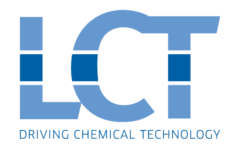Prediction of Turbulent Reactive Flows by means of Numerical Simulations
Aim
The objectvie is coupling detailed kinetic models for free radical and surface processes with Computational Fluids Dynamics (CFD) accounting properly for turbulence.
Context
The 20th century has proven to be a fruitful century in modeling chemical reactors using simplified reactor models and simplified kinetic models. Hence, there’s a good reason to believe that many of those systems are actually far from optimal. Indeed, the supercomputer capabilities in the 21th century make that on a computational level new innovations are possible that 5 years ago one could not even dream of. The current state of the art in CFD makes use almost exclusively of traditional Reynolds-Averaged Navier-Stokes (RANS). The main limitation of RANS modeling is that RANS variables do not depend on time and only averaged flow fields are obtained of which the accuracy can be debated. It must be clear that an instantaneous and averaged turbulent flow field have not much in common. Also intuitively it seems obvious that certain phenomena can simply not be averaged like ignition, quenching, flow instabilities, acoustic waves and thermoacoustics. Note that implementation of detailed chemistry in CFD is at present almost not done, not even when simple turbulence models are used.
Program
Coupling detailed kinetic models with OpenFOAM accounting properly for turbulence. The approach will be validated using a unique set of newly acquired experimental data on the flow field in well-defined reactor geometries using 2D/3D Particle Image Velocimetry (PIV) and liquid crystal thermography.
Implementation of kinetic models with more than 50 species In OpenFOAM using LES. Therefore a dynamic kinetic model reduction method will be developed for the OpenFoam platform in order to drastically decrease the required CPU time. This will be combinend with the classical tools for obtaining reduced chemistry, i.e.: quasi steady state approximation, rate of production and sensitivity analysis.
Evaluate the developed OpenFOAM LES code for low NOx burners, pyrolysis and selected surface reactions.
